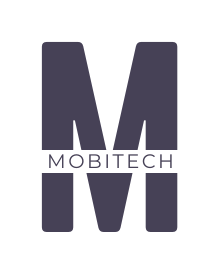As an organization grows and develops, its need for better and more advanced systems also increases. At some point in the growth of every organization, a significant shift to a new enterprise, ERP project control system KSA is needed to streamline operations and improve efficiency.
ERP is the acronym for Enterprise Resource Planning is a major proposition for any business organization. Besides the significant monetary investment and maintenance, there are also costs in terms of dedicated resources and time.
What Is The Implementation Phase Of An ERP System?
In the implementation phase, companies strive to synchronize their current business process with the ERP package. To meet specific and unique business needs, customization of ERP software may be necessary to achieve optimal results. This phase also consists of testing the ERP software and training employees on the new system.
Phase 1 of Implementation of an ERP System: Diagnosis and Analysis
With this phase, it is a question of studying the elements necessary for the realization of the project. And, define the activities required to initiate and sustainably plan the entire project.
Goals
- The main objectives of this phase of the projects include:
- Create and approve the charter as well as the project plan.
- Participate in the project kick-off meeting
- Document and approve functional requirements.
Deliverables
- Project charter
- Project plan
- Risk and Issue Register
- Functional Requirements Document
- Gap Adjustment Analysis Worksheet
Stage Description
The analysis phase begins with project kick-off meetings designed to provide stakeholders with an overview of the project’s vision, scope, goals, key performance indicators, and benefits. After the project launch, the project planning team finalizes the project charter and plan.
Phase 2 of Implementing an ERP System: Design
This step involves developing design documents, finalizing the data migration design, and establishing test criteria.
Goals
The primary objective of this phase is to define how the business requirements will be implemented. For upgrade projects, the purpose of the design phase is to define how the technical upgrade will be implemented.
The specific objectives of the design phase include, among others:
- Core team formation.
- Configuring the Microsoft Dynamics solution
- Documentation of adjustments – configurations in the functional design document
- Functional design specifications for each system modification,
- Functional design specifications and mapping for integration and interfaces in the FDD, and development of the integration and interfaces plan.
- Functional design specifications and mapping for data migration in the FDD and development of a data migration plan.
- Technical design documents for deficiencies based on customer approved functional designs.
Deliverables
Basic team formation
- Functional design documents
- Functional design documents for requirements identified as gaps
- Functional design documents for integration and interface requirements
- Functional design documents for data migration requirements
- Technical design documents
- Solution design document
Stage Description
For new implementation projects, the design phase builds on the previous analysis phase by acting on the deliverables. It ends with the completion of the solution design document, functional design document, and technical design documents. Customer signature is obtained on all design elements and final estimates, and the development team is prepared for the development effort.
Phase 3 of Implementing an ERP System: Development
This stage is dedicated to finalizing configurations and configuring the standard solution, developing and finalizing custom code required to support the solution, and creating user training documentation.
Goals
The purpose of the development phase is to run the application upgrade process. It also includes system testing to ensure that the upgrade of the application and data to the new version of the Microsoft Dynamics solution has been completed successfully. Performance benchmarks are reviewed to determine the resources needed to support new benchmarks for upgraded data.
Deliverables
- Training guides
- Final Business Process Models
- Final System Configuration
- Final development of custom code
- Testing the solution (process, integration and data acceptance)
- Specification of the final production environment
- Final integration and interface code development
- Final development of data migration code
Stage Description
The deployment plan initiated during the design phase should be updated as part of project planning activities. At this level, the development of the training guides is complete and presented to the client for review.
Phase 4 of Implementing an ERP System: Deployment
This is the moment when all the efforts of the project team come together for a successful transition to the new Microsoft Dynamics solution.
Goals
- Configure the production environment
- Migrate data to production environment
- Perform system user acceptance test
- Train users and finalize user documentation
- Perform release verification and promote system production
Deliverables
- Final user training
- User Acceptance Test Results
- Final data migration (excluding upgrade projects)
- Final Readiness and Release Checklist
- Production environment
- Transition to Production
Stage Description
The Operation phase includes the final activities required to close the project and deliver the solution and knowledge to the customer. The deployment plan initiated during the design phase is finalized with the consulting and project teams.
Phase 5 of Implementing an ERP System: Testing
This stage defines the activities necessary to close the project, provide post-production support and ensure the transition of the solution and knowledge to the client.
Goals
- Provide post go-live support
- Commission the transition solution
- Perform a final quality audit and close the project.
Deliverables
- Project closure report
- Final delivery of all project deliverables to the client
- Lessons learned documented
Stage Description
The program management team prepares final invoices, lessons learned, project closure report and prepares for the formal project closure meeting. She also prepares a file with all the deliverable documents of the project and their acceptance forms. These documents are reviewed with the client for final approval.
Read more: Fatoora ERP Software for Manpower Supply KSA




